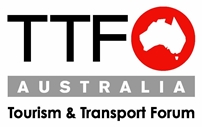TTF Media Release
9/5/2023
TOURISM TAX WILL FORCE TRAVELLERS TO PAY MORE
The tourism industry is deeply disappointed that the Federal Government has lifted the Passenger Movement Charge (PMC) to a hefty $70 in tonight’s Federal budget, pushing up the cost of travel for Australians and international visitors from July next year.
The Tourism & Transport Forum (TTF) Australia warned increasing the rate from $60 to $70 per passenger, for Australians and visitors leaving the country, is a major setback for the industry, potentially putting jobs at risk.
TTF CEO Margy Osmond said it would make it harder for the tourism sector, which employs more than one million Australians, to recover.
“This will make it even more difficult for tourism to bounce back, as cost-of-living pressures increase and as the industry rebuilds from the devastating impacts of the Covid pandemic,” Ms Osmond said.
“It will also make it more expensive for international tourists to come to Australia, at a time when we’re desperately trying to attract more visitors, with Australia’s international tourism levels still below pre-Covid levels.
“However, we are pleased the government has listened to industry and used real common sense by not introducing the increase until the 1st of July, 2024 to enable the aviation sector to adequately prepare for the implementation of the increase.”
Ms Osmond said the industry is calling for a five-year freeze on any future increases to provide certainty for the tourism sector, which has had more than its share of upheaval over the years since Covid hit in early 2020.
“As we continue to recover from the biggest event to impact the tourism industry in recent memory, the freeze will be critically important to give the tourism industry much-needed certainty,” she said.
“The government also needs to be more transparent about how the money collected through the PMC is spent, explaining where exactly it’s allocated given the average rate of overcollection.
“In the three years prior to the pandemic, the PMC collected on average $811 million more than the funds dedicated to border processing measures. Rather than disappearing into the government bottom line, this extra funding could be put towards stronger and more innovative biosecurity outcomes for the Australian border.”
Ms Osmond also expressed concern over plans to increase visa application costs for visitor and working holidaymaker sub-classes by more than 20 per cent, in addition to CPI.
“It makes no sense to be slugging international visitors and working holidaymakers more for visa application fees when we are investing significant amounts of funding to re-attract them back to Australia. Other countries are charging less and in some cases, offering incentives to attract visitors, particularly working holidaymakers, to help plug their skills gaps.”
Ms Osmond, however, commended the Government on maintaining funding for Tourism Australia over the forward estimates.
“It is critical that our national destination marketing agency is adequately resourced if we are to successfully rebuild our inbound international visitor market to pre Covid levels,” she said.
“It would be great to see an uptick in funding in future budgets to enable Australia to compete as a destination in the most competitive global tourism market we have ever seen. Perhaps some of the over collected money from the PMC can be redistributed for this purpose along with assisting to fund bio-security measures.”
Media contact: Olivia Leeming | oleeming@ttf.org.au
